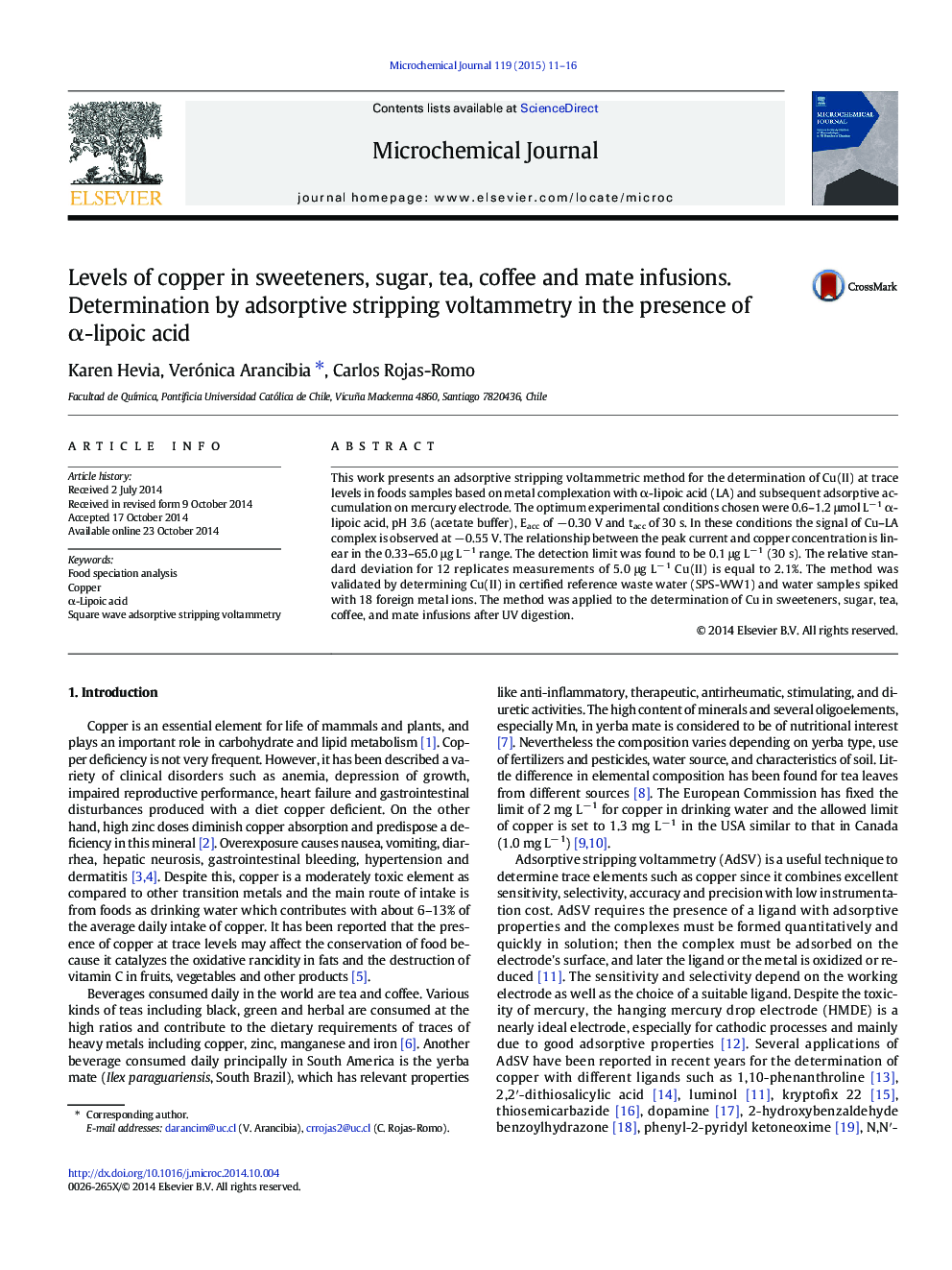| Article ID | Journal | Published Year | Pages | File Type |
|---|---|---|---|---|
| 1227724 | Microchemical Journal | 2015 | 6 Pages |
•A sensitive, rapid, and selective method Cu(II) determination in some food samples was developed.•The adsorbed complex produces a strong peak at about − 0.55 V.•The LOD of the method was 0.1 μg L− 1 and the detection time was within 30 s.•The peak current can be used for trace quantification of copper in food samples.•The method was validated and interference study was carried out.
This work presents an adsorptive stripping voltammetric method for the determination of Cu(II) at trace levels in foods samples based on metal complexation with α-lipoic acid (LA) and subsequent adsorptive accumulation on mercury electrode. The optimum experimental conditions chosen were 0.6–1.2 μmol L− 1 α-lipoic acid, pH 3.6 (acetate buffer), Eacc of − 0.30 V and tacc of 30 s. In these conditions the signal of Cu–LA complex is observed at − 0.55 V. The relationship between the peak current and copper concentration is linear in the 0.33–65.0 μg L− 1 range. The detection limit was found to be 0.1 μg L− 1 (30 s). The relative standard deviation for 12 replicates measurements of 5.0 μg L− 1 Cu(II) is equal to 2.1%. The method was validated by determining Cu(II) in certified reference waste water (SPS-WW1) and water samples spiked with 18 foreign metal ions. The method was applied to the determination of Cu in sweeteners, sugar, tea, coffee, and mate infusions after UV digestion.
